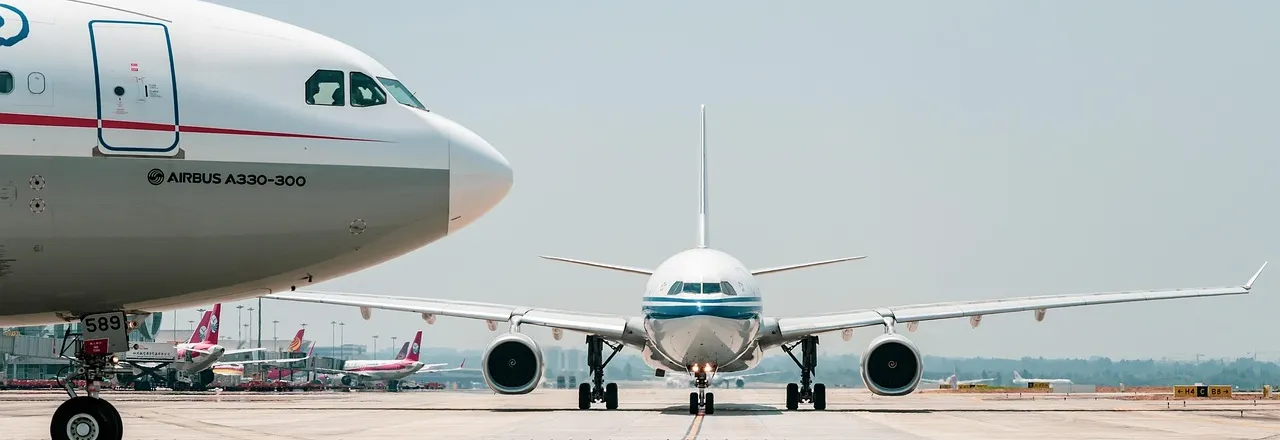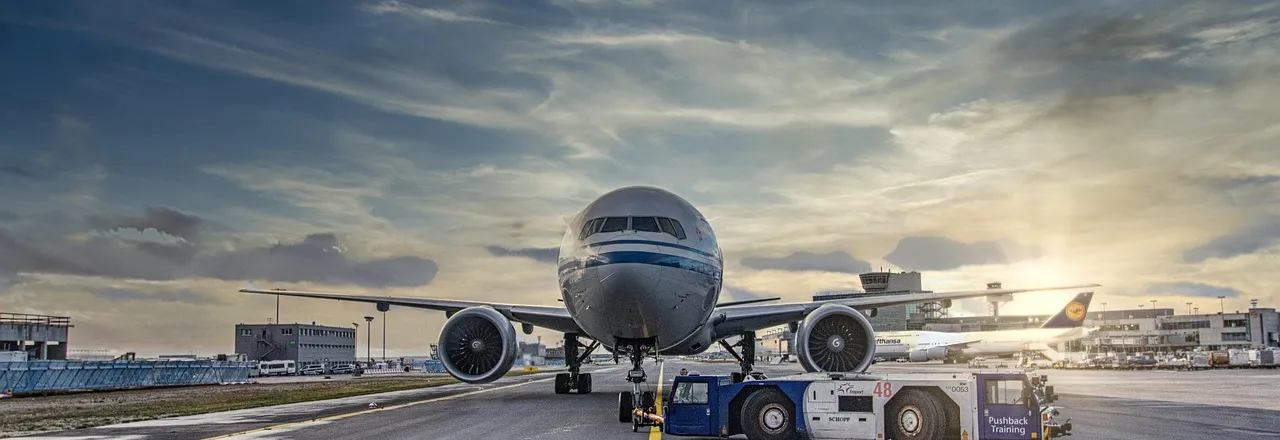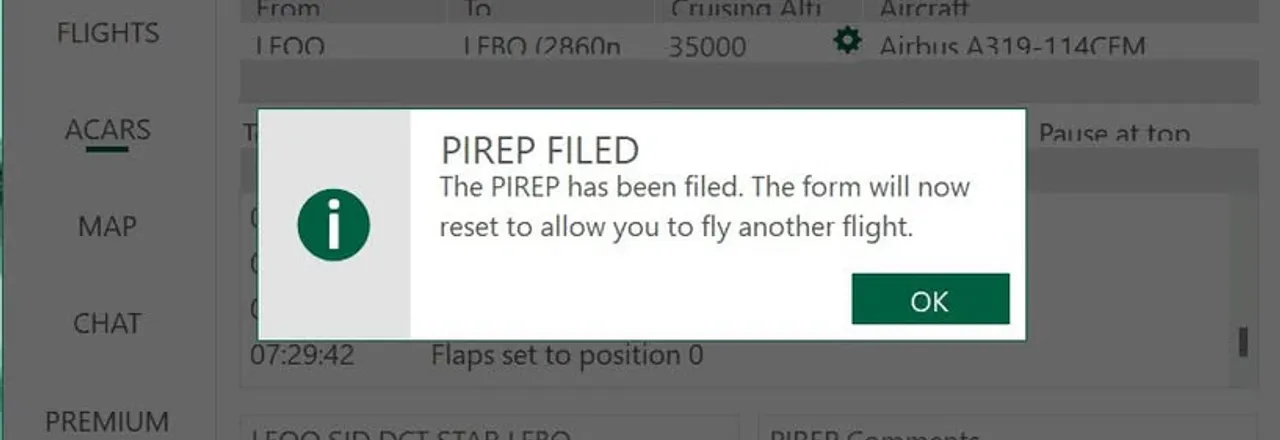Blog
FAQ - Frequently asked questions
In order to provide an answer to the most frequently asked questions, we keep this section up to date.
What is FlyZold ?
FlyZold is a simple and efficient virtual airline management system. We provide two products (FlyZold Copilot and FlyZold Horizon) to virtual airlines including modern and ergonomic interfaces, a unique modular extensions and budget billing system, an ACARS client, an easy customization system, a granular permissions system, a professional flight dispatching system, detailed PIREPs review using maps and graphs, a simple and clear Developers API (including widgets) for virtual airlines using their own websites, and finally regular updates and support through our dedicated Discord server.
FlyZold is the ultimate virtual airline management system, offering a seamless and powerful solution to streamline operations for any virtual airline. It's designed with a user-friendly interface that simplifies pilot management, flight scheduling, and fleet tracking, making it easy for administrators to maintain a high level of realism and efficiency. With extensions, it can cater to any airline's unique needs, whether you're running a small regional carrier or a large, global virtual airline.
What sets our virtual airline management system apart is its robust real-time flight tracking system with detailed reports, allowing virtual airlines to operate smoothly and professionally. It's built for scalability, ensuring your airline can grow without limitations. Coupled with strong community features, it fosters collaboration and engagement, making it the best choice for virtual airline management.
What is a virtual airline ?
A virtual airline is an online organization that simulates real-world airline operations but does not own or operate actual aircraft. These organizations are typically made up of flight simulation enthusiasts who engage in realistic virtual flying, often using software like Microsoft Flight Simulator or X-Plane.
Virtual airlines may have virtual pilots, flight schedules, routes, and management systems, mimicking the structure of real airlines without the need for physical planes or airports. They offer a way for people to experience and participate in aviation activities digitally.
Generally, the flight performed is recorded either automatically by a software called "flight tracker" (our solution uses for example Horizon ACARS) during the flight, or after the flight directly on the FlyZold Copilot's interfaces where virtual pilots can publish a manual flight reports.
Flight reports are called "PIREPs". These PIREPs includes information related to the aircraft used, the departure and arrival airports, the altitude, the flight time and more generally all the events that occurred during the flight. Each PIREP is then saved in FlyZold Copilot and can be found in the virtual pilot's logbook, where each PIREP can be consulted to find all the information related to it presented in the form of graphs, maps or dashboards.
What is a virtual airline management system ?
A virtual airline management system is a specialized software platform designed to help manage and organize the operations of a virtual airline. It allows virtual airline administrators to create and manage flight schedules, assign pilots to specific routes, and track their flights. A Virtual airline management system may also include features for managing virtual fleets, monitoring pilots performances, and generating flights reports (or "PIREPs") to help administrators assess the airline's overall operation.
These systems are crucial for creating a structured, realistic experience for both the virtual airline administrators and pilots. A virtual airline management system often integrates with popular flight simulation platforms like Microsoft Flight Simulator or X-Plane, enabling seamless connections between the virtual airline's operations and actual flight simulations. It can include real-time flight tracking (with FlyZold Horizon), which helps replicate the experience of managing a real airline, including logistics and coordination between virtual pilots, dispatchers, and administrators.
In addition to operational tasks, virtual airline management systems may offer social features, such as community events or tours for pilots and administrators to interact. They often include pilot training programs and features that allow for customization based on the needs of the virtual airline. Overall, a virtual airline management system creates a comprehensive environment that simulates the challenges of running an airline, fostering both realism and community interaction within the virtual aviation world.
How to create a virtual airline ?
Creating a virtual airline involves several key steps to ensure its operations are both realistic and engaging. The first step is to choose a niche or theme for the airline, such as focusing on a specific region, type of aircraft, or even adopting a unique brand identity. This will help attract a dedicated group of virtual pilots and define the airline's operational focus. Once the concept is defined, the next step is to establish flight routes, schedules, and create a virtual fleet.
The second step involves setting up a virtual airline management system (like FlyZold Copilot) which helps coordinate the airline's operations. This system can manage pilot recruitment, assign flights, track flights, and even simulate real-world airline management practices like flight performance reports. Additionally, virtual pilots will need access to flight training and onboarding resources to ensure they understand the rules and systems in place, as well as the airline's operational expectations.
Lastly, building a community is essential for the success of a virtual airline. This involves promoting the airline through forums, social media, and virtual aviation communities to attract new virtual pilots. It's also important to foster communication among virtual pilots through internal communication tools like forums, chat rooms, and regular online events. Offering rewards, creating a friendly environment, and hosting regular virtual meetups will help maintain interest and engagement, making the virtual airline a dynamic and thriving community.
What are the legal considerations while creating a virtual airline ?
When creating a virtual airline, one of the primary legal considerations is ensuring that the airline's branding, logo, and any intellectual property (IP) used do not infringe on real-world airline trademarks or copyrighted material. This includes avoiding the use of airline names, logos, or other distinctive elements owned by actual companies. Virtual airlines should carefully craft their own unique identities to prevent legal challenges from established airlines or other entities.
Another important consideration is the adherence to regulations around online content and data privacy. Virtual airlines often collect personal information from virtual pilots, such as names, email addresses, and flights, and must comply with data protection laws like the GDPR (General Data Protection Regulation) in Europe or similar regulations in other regions. Protecting this data and ensuring transparency with users about how it is used is essential for avoiding legal issues.
Finally, virtual airlines need to be mindful of their online presence and activities. Hosting events, running competitions, or offering services may require proper disclaimers or terms of service to clarify that the virtual airline is not an actual, physical airline and is not intended for real-world flight operations. Ensuring that virtual pilots and participants are aware of the distinction between the virtual and real-world aspects of aviation is key to maintaining a legally compliant and transparent organization.
How to track flights from a flight simulator ?
Efficiently tracking flights from flight simulators requires the integration of tracking software (like FlyZold Horizon) with your virtual airline management system. Many flight simulators, such as Microsoft Flight Simulator and X-Plane, allow third-party tools to track real-time flight data. By using flight-tracking softwares like FlyZold Horizon, virtual pilots real-time movements, departure and arrival times, and flight paths can be automatically logged and reported. This integration ensures that flight logs are accurate and up-to-date without requiring manual entry (except if a problem has occurred during the flight).
Another method of efficient tracking is leveraging networked flight tracking systems. Virtual airlines can encourage their virtual pilots to connect to flight networks, which track flights in real-time across a large community. These networks provide not only real-time tracking data but also enhance the realism of the flying experience by providing air traffic control and other virtual aircraft. By using these networks, virtual airlines gain a more immersive and reliable tracking solution, as well as increased interaction between virtual pilots and air traffic controllers.
To streamline the process, automated softwares like FlyZold Horizon must be used to monitor virtual pilots progress during a flight and flight networks can be used in conjunction with it to improve the overall flight immersion. These systems track critical flight parameters, such as flight path, fuel consumption, and deviations from planned flight paths in normal and abnormal situations. Using these softwares reduces the need for constant manual oversight, ensuring that administrators can focus on other aspects of airline management while still receiving accurate flight data.
Do I need specific knowledge in programming to create my own virtual airline ?
Creating your own virtual airline doesn't necessarily require advanced programming knowledge, but some basic understanding of technology can certainly help. For example, familiarity with managing flight simulation software, setting up virtual airline management systems, and using third-party plugins can make the process smoother. Many virtual airline management systems like FlyZold are designed with user-friendly interfaces and don't demand coding skills.
If you want to develop your own features or systems from scratch, such as a custom flight tracker or a custom virtual airline management system, programming knowledge would be beneficial. Languages like JavaScript, or PHP are commonly used in web development and backend systems, and they can help you create or modify tools that are tailored specifically to your virtual airline. For non-programmers, however, there are many third-party solutions like FlyZold available that allow you to build and manage a virtual airline without needing to write code.
For those with limited technical expertise, there are plenty of tools and resources available that allow you to run a successful virtual airline without delving into programming. Many virtual airline enthusiasts focus on operations, community building, and flight management, relying on existing platforms and tools to handle the technical aspects. So while programming knowledge can enhance the customization and scalability of your virtual airline, it's not a strict requirement to get started.
Why virtual pilots should fly for a virtual airline ?
Virtual pilots, those who engage in online flight simulation communities, often find significant value in joining virtual airlines, which simulate the operations of real-world airlines within the virtual world. One of the primary reasons virtual pilots should consider joining virtual airlines is the sense of community they provide. Virtual airlines bring together like-minded individuals with a shared passion for aviation, allowing virtual pilots to connect with others, share experiences, and engage in collaborative activities. This community aspect fosters a more enjoyable and social flying experience, turning solo flights into opportunities for camaraderie and shared goals. Many virtual airlines also host events, group flights, and competitions that add excitement and variety to a virtual pilot journey.
Another key benefit of joining a virtual airline is the structure and realism it offers. Virtual airlines often mirror the operations of real-world airlines, complete with flight schedules, routes, and protocols. This structure provides virtual pilots with a more immersive and goal-oriented experience. It allows them to fly within a well-organized system, managing routes, flight planning, and realistic job responsibilities. This can be especially appealing to those who want to go beyond casual flying and engage in the intricacies of professional aviation, such as flight planning, crew coordination, and adherence to airline-specific procedures. For pilots seeking to develop a more disciplined and structured approach to virtual aviation, virtual airlines can offer a rewarding environment to practice and hone skills.
Joining a virtual airline offers opportunities for progression and rewards. Many virtual airlines operate rank systems, where pilots can climb the ranks as they accumulate flying hours and complete more challenging flights. This progression can lead to a sense of achievement and motivate pilots to continue improving their flying skills. Additionally, virtual airlines often provide various incentives, such as promotions, special events, and recognition, which can make the virtual flying experience more fulfilling. For pilots looking for long-term engagement, the rewards system in a virtual airline ensures there is always something to strive for, keeping the experience fresh and exciting over time.
What is a flight simulator ?
A flight simulator is a software or hardware-based system designed to replicate the experience of flying an aircraft. It allows users to experience realistic flight scenarios without leaving the ground, offering a controlled environment to practice piloting skills, understand aviation systems, and test various flight conditions. Flight simulators range from basic desktop programs for hobbyists to sophisticated full-motion setups used by professional pilots for training. The technology mimics everything from aircraft controls and instruments to weather conditions and airport layouts, providing an immersive experience that closely mirrors real-world flying.
Flight simulators are widely used in aviation for pilot training, enabling students to practice maneuvers, emergency procedures, and decision-making without the risk associated with real flight. They are essential tools for commercial and military aviation, where safety and proficiency are paramount. These simulators help pilots maintain their skills and get accustomed to the operation of various aircraft types in different flight conditions, from clear skies to adverse weather. The ability to simulate emergencies, such as engine failure or electrical malfunctions, ensures that pilots are prepared for any situation they may encounter in real flights.
In addition to professional use, flight simulators are popular among aviation enthusiasts and gamers, offering a fun and educational way to experience flight. Many advanced simulators provide realistic graphics, physics, and sound, which contribute to the thrill of piloting a virtual aircraft. Some systems even support virtual reality (VR) or motion-based inputs, further enhancing the sense of immersion. Whether for serious training or recreational enjoyment, flight simulators offer an accessible and effective means of experiencing the complexities of aviation from the safety of the ground.




